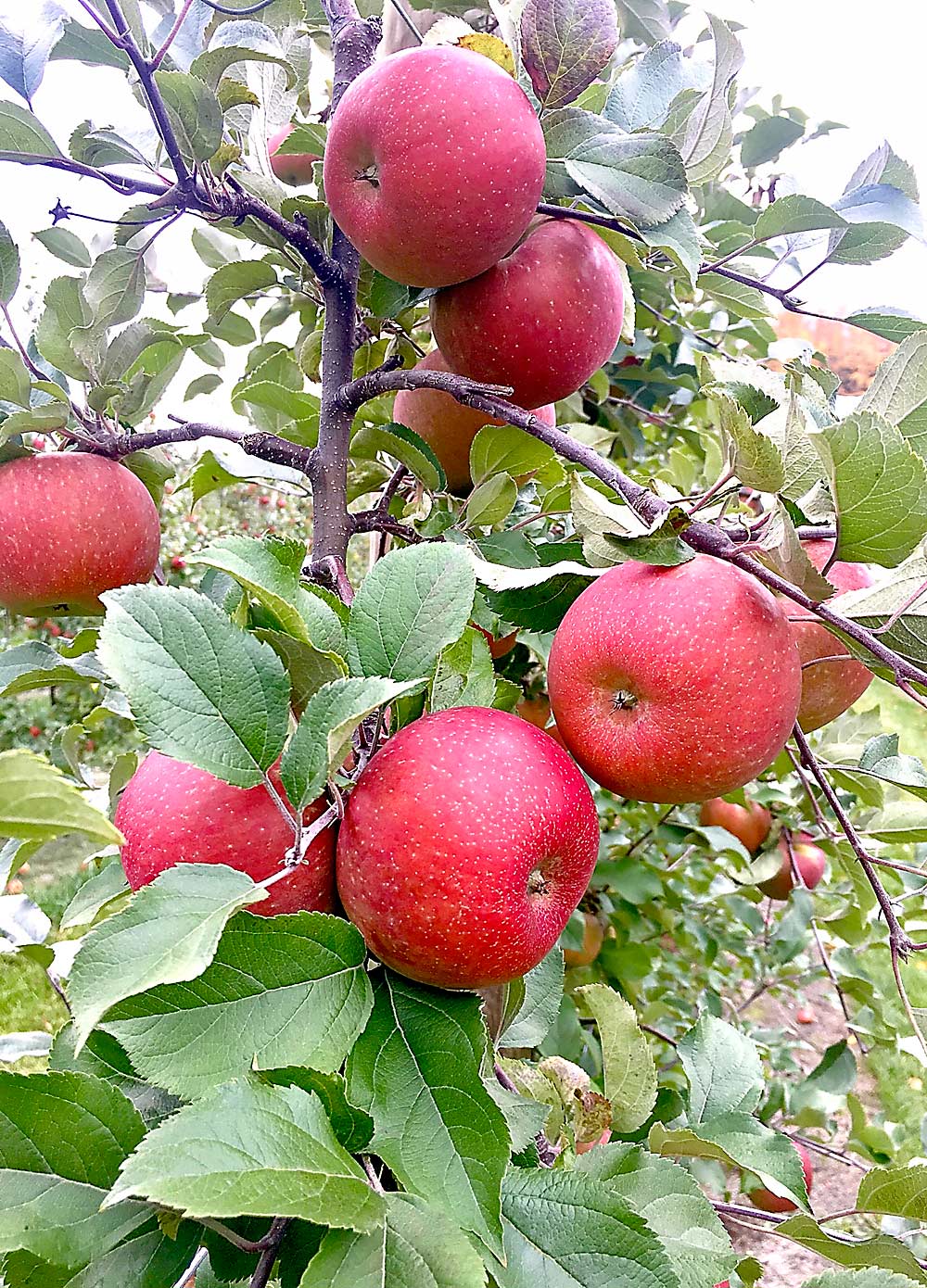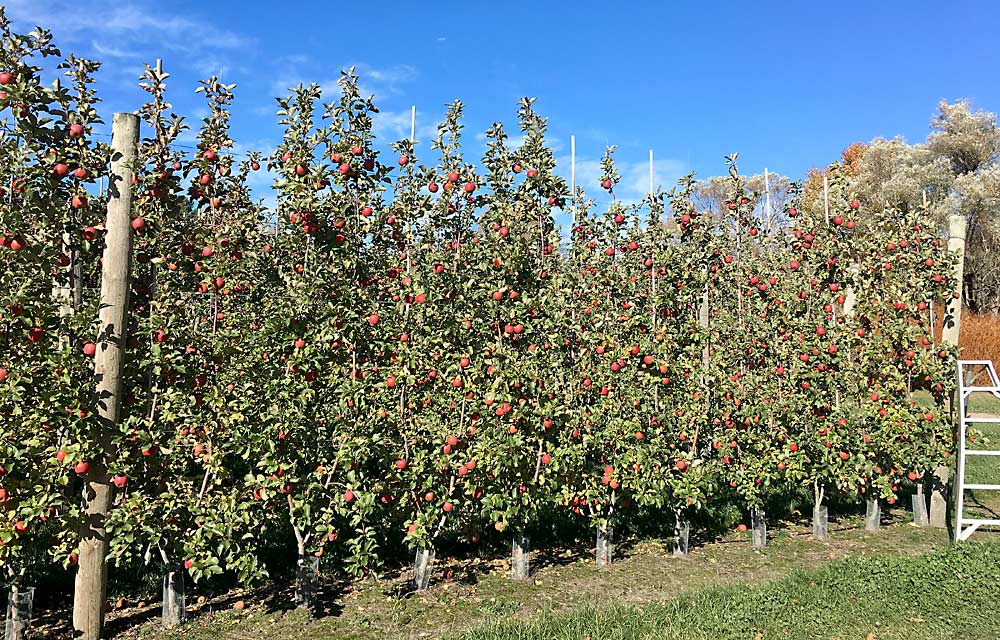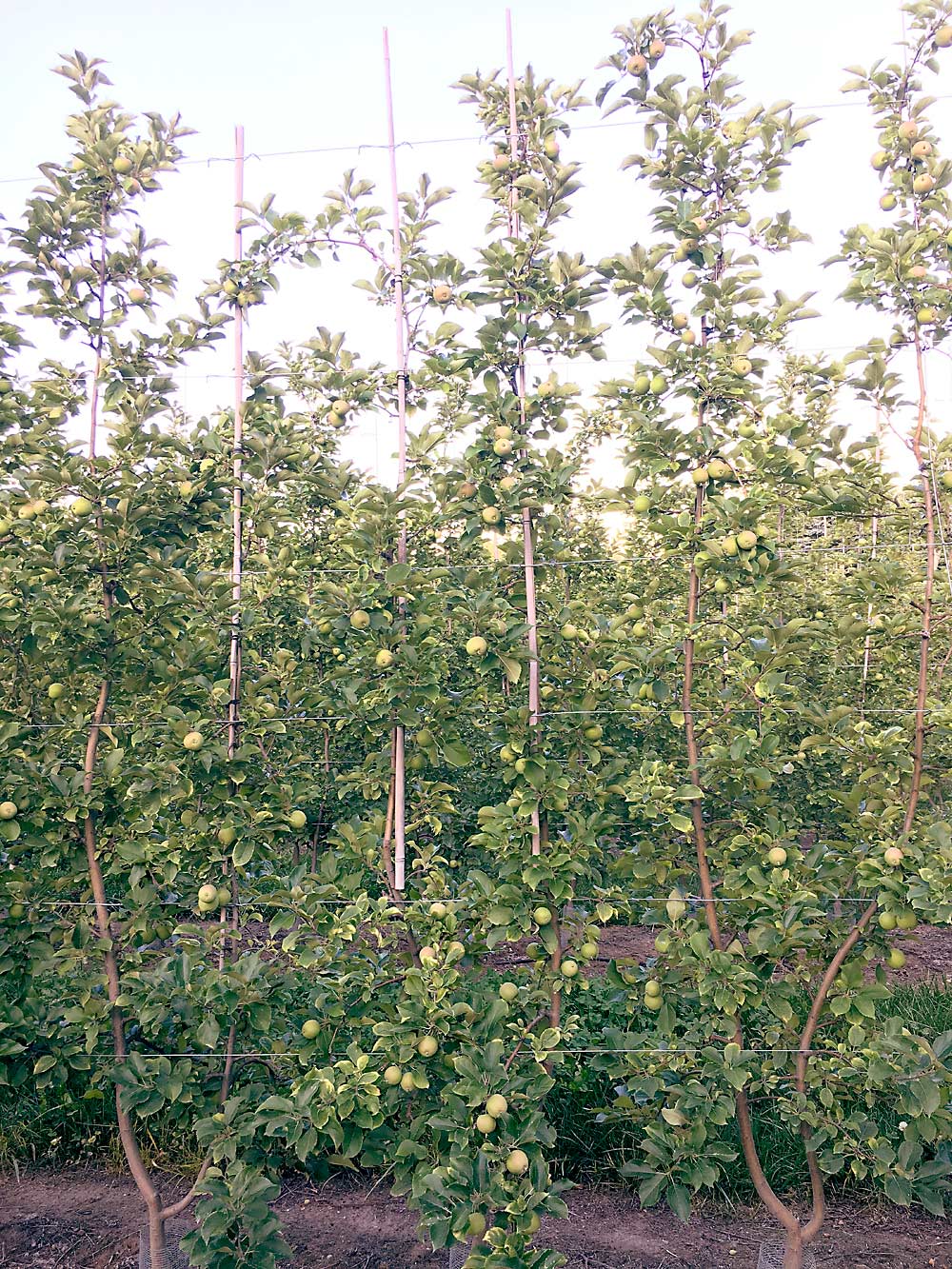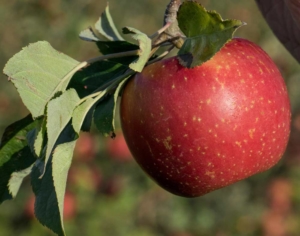
Northwest Michigan growers want to learn more about MAIA1, the apple marketed as EverCrisp. The variety has a terrific taste and keeps extremely well, qualities that make it popular with consumers and growers, but there’s a potential problem for growers located that far north: the late harvest date.
MAIA1’s ripening window in Northwest Michigan is the first week of November —butting up against not only freezing temperatures but also a time of year when many growers just don’t want to pick apples anymore.
Being a relatively new variety, no one can say exactly how well MAIA1 will perform in Northern growing regions. Bill Dodd, president of the Midwest Apple Improvement Association, the breeding group that released MAIA1, said there are test trees in Northern orchards, but the group doesn’t recommend growing the variety too far north because of potential problems. There are a few rows of MAIA1 in the ground in New York state’s Champlain Valley, but most are first- or second-leaf, so it’s too early to know how they’re going to perform, said Michael Basedow, Cornell Cooperative Extension tree fruit specialist.
To gauge MAIA1’s performance in Northwest Michigan, Nikki Rothwell, coordinator of Michigan State University’s Northwest Michigan Horticulture Research Center, oversaw the planting of a small test plot at the research center in spring 2020. The trees are planted on seven rootstocks (Geneva 11, 41 and 935; Budagovsky 9 and 10; Malling 9; Nic.29; and M.9 NAKB 337), each replicated several times. Rothwell wants to learn if any of the rootstocks can hasten the ripening of MAIA1, giving growers a little more time to harvest before potential freeze damage. She also wants to find out if the apple colors better on certain rootstocks.
A couple of Northwest Michigan growers decided to risk planting MAIA1 trees on their own, to see for themselves if they could get a consistent harvest.
Kevin VerSnyder, a grower in Lake Leelanau, planted 1,000 double-leader trees on G.41 rootstock in 2016, then 200 more in 2018. G.41 seems to work well in his sandy soil, he said.
After his first taste of EverCrisp, VerSnyder decided planting it was worth the gamble. If it ripened any later than early November, though, he wouldn’t have dared. He has 10 GoldRush trees that don’t ripen until mid-November, and he’s had only one successful GoldRush harvest in the last several years.

In 2019, VerSnyder picked his MAIA1 trees in early November, two days before a foot of snow hit. He picked them about the same time in 2020, after an extremely cold night. The apples “semi-froze” on the tree, but they thawed out by lunch. When he picked them the next day, they were undamaged.
“They can take some cold,” he said. “The key for us up here is you have to thin really well. Don’t go for big bins per acre.”
VerSnyder said he left too many apples on the tree in 2019, and they didn’t ripen uniformly. He thinned harder in 2020, which gave him a smaller but higher-quality crop. He likes that he doesn’t have to stem clip MAIA1, either, because the apples are hard and their stems are bendy. That saves him time during a tight harvest.
VerSnyder has learned enough about MAIA1’s performance in his area to recommend other growers try it — as long as they don’t mind picking apples that late.
“That’s a deal-breaker for most of my friends,” he said. “They don’t want to pick in November.”

A little farther south in Cedar, Michigan, Greg Williams has grown MAIA1 for about three seasons. He’s got about 10 acres of double-leader trees now, on Nic.29 rootstock. He planted them on higher-elevation sites, the knobs he generally reserves for fresh sweet cherries.
“I wouldn’t recommend planting them on low ground,” he said. “It’s a bigger gamble.”
Williams planted MAIA1 to diversify his crop mix, and because it’s his favorite apple. His experience so far has been “hit or miss.” He harvested them just before the weather turned bad in 2019, but they weren’t fully ripened. Conditions were better in 2020, however, when he picked a finished crop.
Like VerSnyder, Williams recommends thinning heavily, because even in good years there won’t be enough time for a second picking. MAIA1 has to be a single-pick apple that far north. •
—by Matt Milkovich







Leave A Comment